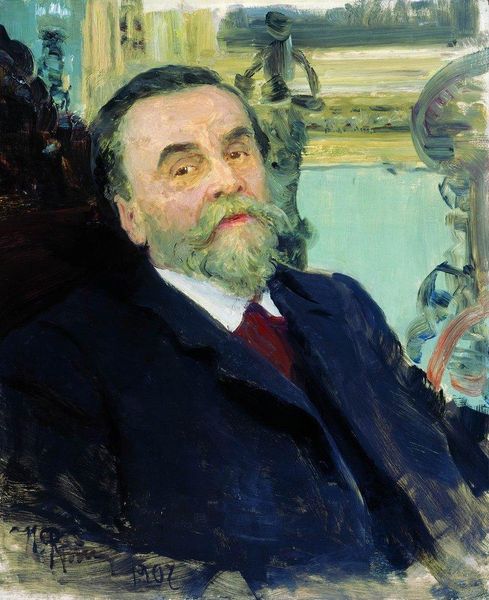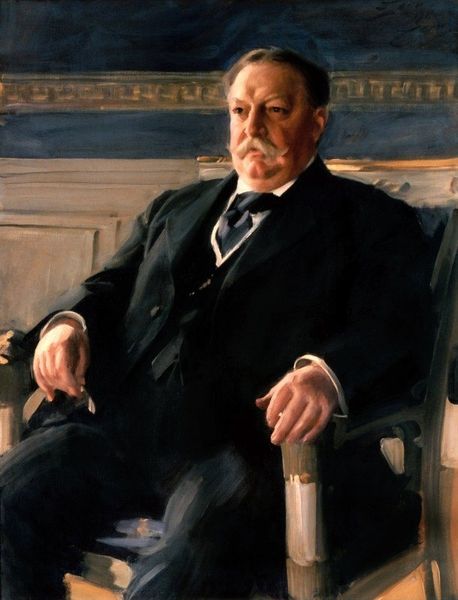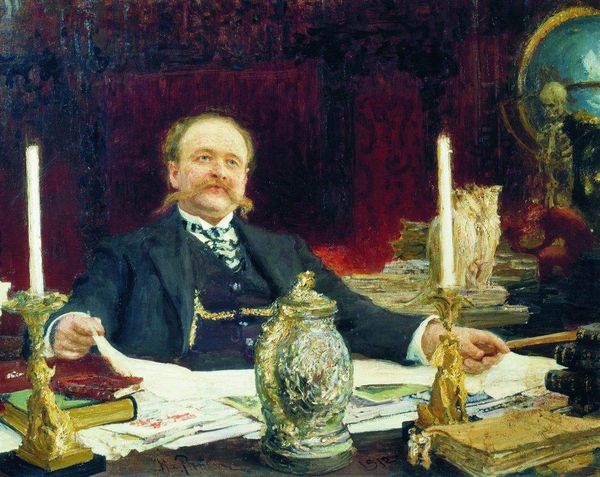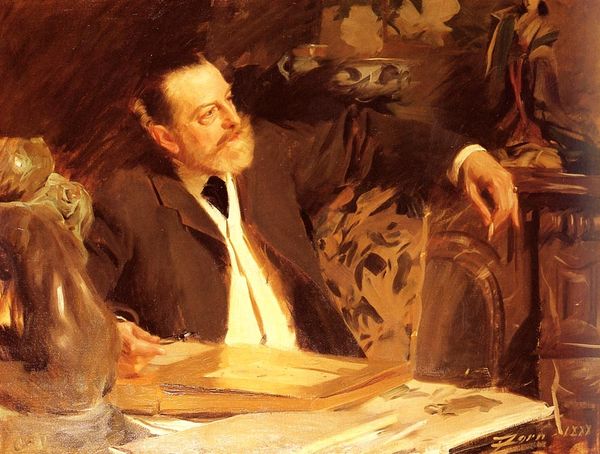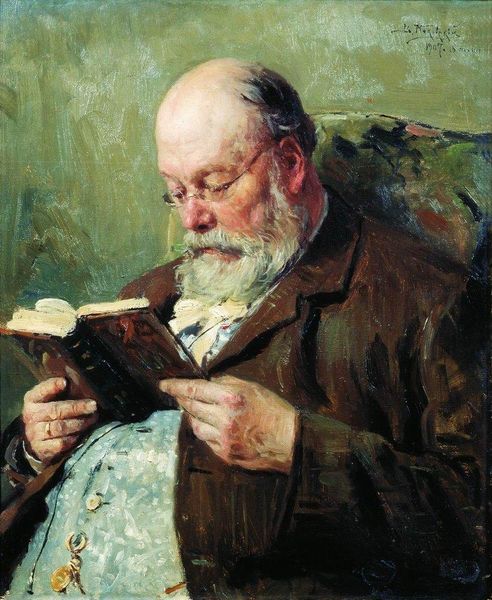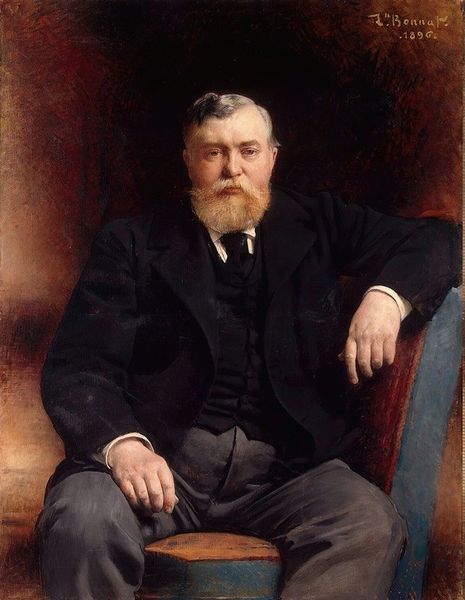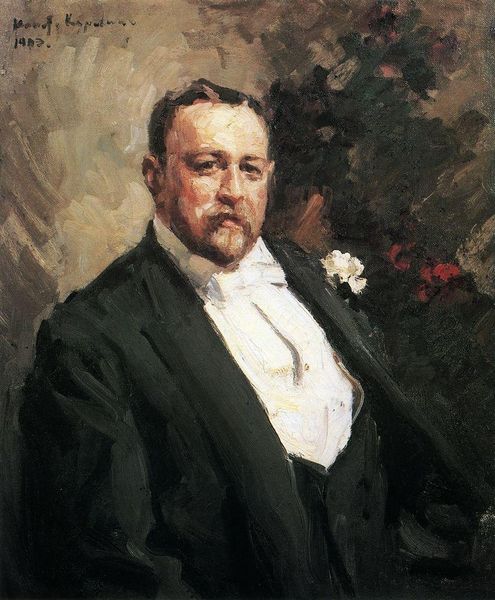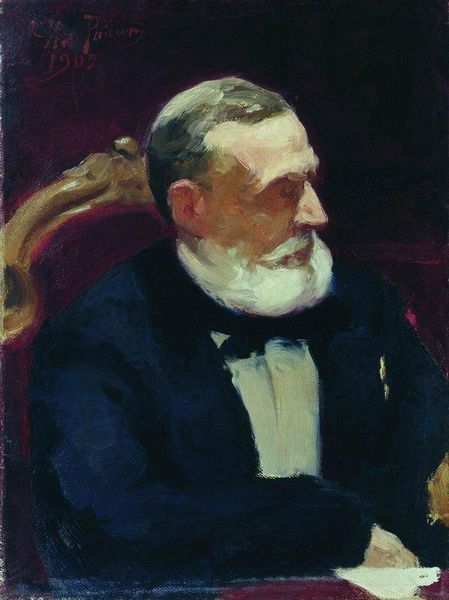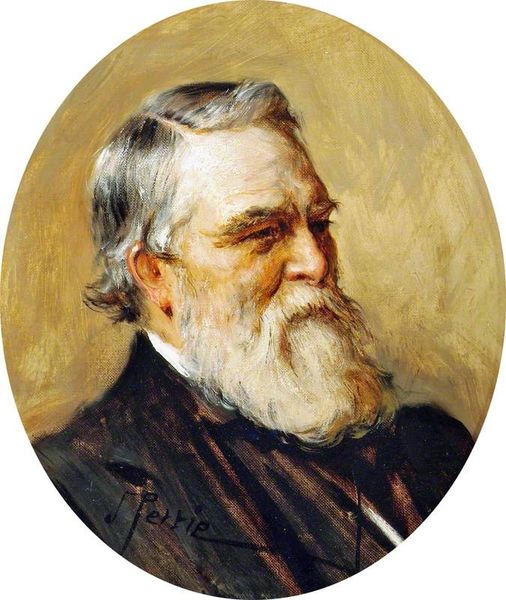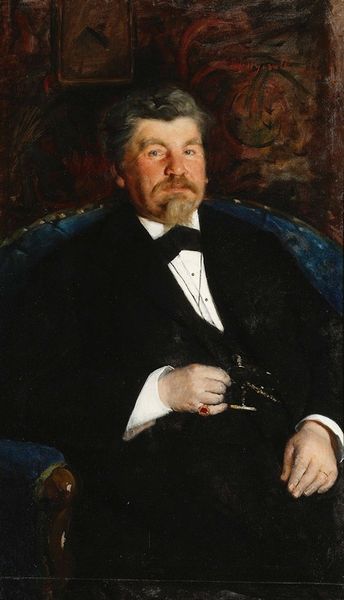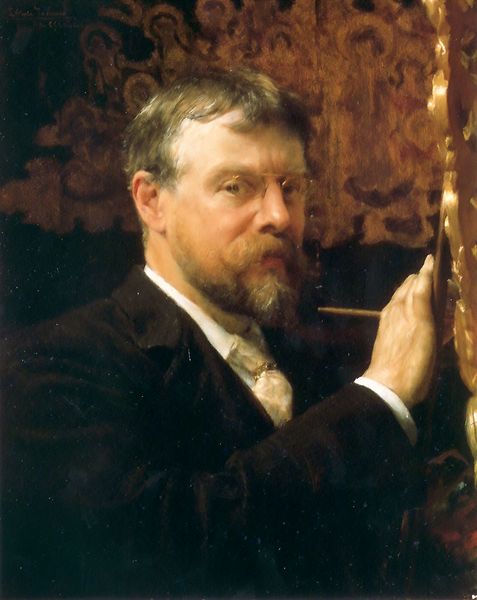
oil-paint, impasto
#
portrait
#
character portrait
#
portrait
#
oil-paint
#
portrait subject
#
impasto
#
portrait reference
#
male-portraits
#
portrait head and shoulder
#
russian-avant-garde
#
genre-painting
#
facial portrait
#
portrait art
#
fine art portrait
#
realism
#
celebrity portrait
#
digital portrait
Dimensions: 39 x 49 cm
Copyright: Public domain
Editor: Here we have Vladimir Makovsky's 1907 painting, "Lover of painting. Portrait of a collector I. E. Tsvetkov," rendered in oil. It feels intimate, almost like a snapshot, capturing the subject in a very private moment of contemplation. What do you see in this piece that connects to its broader historical context? Curator: What immediately strikes me is how this portrait humanizes art collecting itself. Consider the context: Tsvetkov wasn't just any collector; he was deeply involved in promoting Russian art. This image subtly challenges the stereotype of the detached, wealthy patron. The soft light, the casual pose, and the painting within a painting-- these details suggest a genuine engagement with art, not just possession. How might this have played into shaping public perceptions of art and those who supported it at the time? Editor: That's a fascinating point – humanizing the collector. So, instead of seeing him as someone purely transactional, we see him as invested in the art. It almost makes the artwork seem accessible. Curator: Precisely. Makovsky seems keen on depicting Tsvetkov as part of the artistic ecosystem, rather than standing apart from it. This connects with broader questions about who gets to participate in defining cultural value, and whose voices are amplified. Editor: I see. So, this is not *just* a portrait of a man, but of a social role in a time of evolving artistic values. Curator: Exactly. And notice how the style—realism leaning towards something softer, more intimate— distances itself from grand, official portraiture. It encourages the viewer to identify with the collector on a personal level, making his collecting practices appear less like elitist patronage and more like accessible acts of supporting emerging Russian art. What did you take away from it? Editor: This shifted my perspective a bit, making me think more about the socio-political aspects that shaped the art world back then. Thank you. Curator: Indeed! It's always worth asking: who are we *not* seeing represented, and how does that influence what survives in the historical record?
Comments
No comments
Be the first to comment and join the conversation on the ultimate creative platform.
